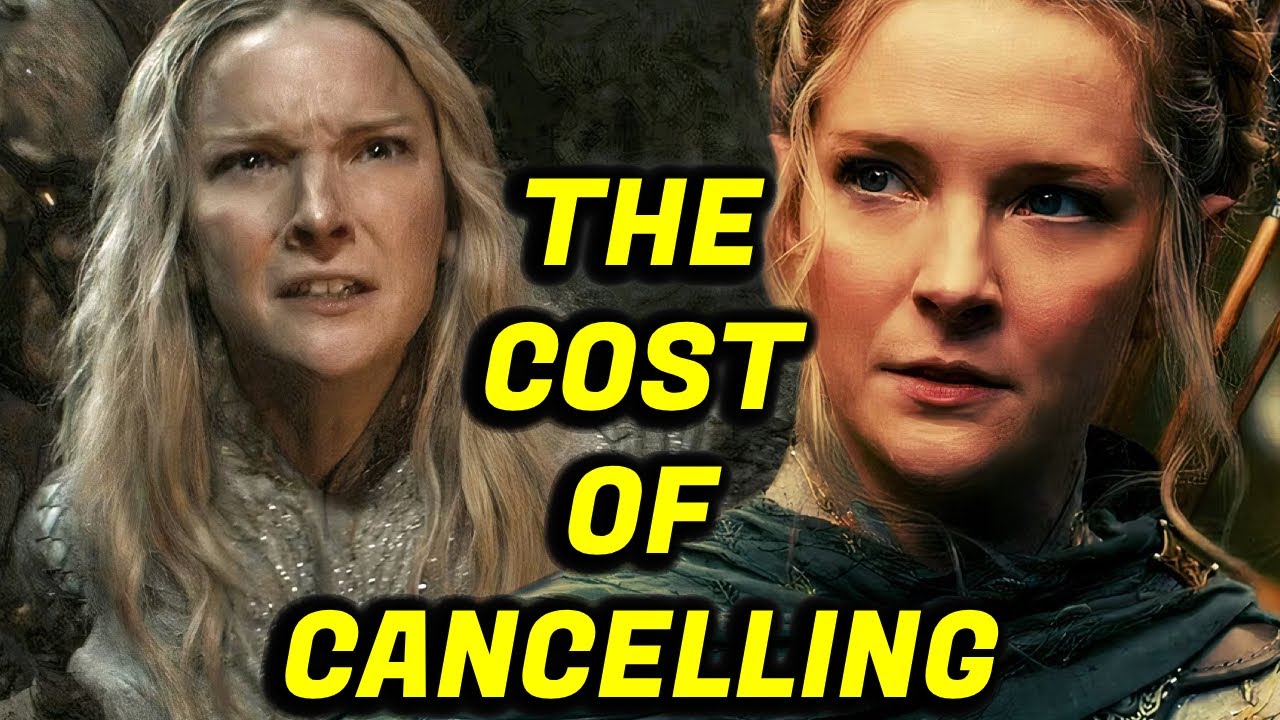💍 What if Middle-earth’s fate is sealed by a billion-dollar curse—Amazon locked in a deal where pulling the plug costs more than Sauron’s wrath? 😈 The Rings of Power marches on despite crumbling viewership, but at what hidden price? Will the One Show bind them all, or shatter the empire? Uncover the epic financial trap! 🏰🔥👉

In the high-stakes realm of streaming wars, Amazon’s Prime Video flagship, The Lord of the Rings: The Rings of Power, stands as a colossal gamble that’s proving harder to abandon than to sustain. Launched in 2022 with unprecedented hype and a budget exceeding $1 billion across its planned five seasons, the series has faced mounting criticism for diverging from J.R.R. Tolkien’s lore, sluggish pacing, and a sharp drop in audience engagement. Yet, despite season 2’s viewership plummeting by up to 60% from its debut, Amazon shows no signs of cancellation. The reason? A web of contractual “kill fees,” sunk investments, and strategic commitments that make walking away financially ruinous. As Prime Video navigates internal shakeups and broader content cuts, The Rings of Power’s persistence highlights the perils of blockbuster ambition in an era of streaming austerity.
The series’ origins trace back to 2017, when Amazon shelled out $250 million for global television rights to Tolkien’s works, outbidding competitors for a multi-season adaptation set in the Second Age. This deal locked in a commitment for five seasons totaling 50 episodes, with showrunners J.D. Payne and Patrick McKay envisioning an epic saga of ring-forging, elven wars, and Sauron’s rise. Season 1’s production alone cost $465 million, or roughly $58 million per episode, excluding marketing—figures that dwarf most prestige TV budgets and fueled early buzz as Amazon’s answer to HBO’s Game of Thrones. Critics praised its visuals and production values, earning an 84% Rotten Tomatoes score, but fans decried deviations like the shortened timeline and character alterations, sparking review-bombing and online backlash.
Viewership for the premiere was a streaming milestone: Amazon claimed over 25 million global viewers in the first two days, with season 1 accumulating billions of minutes watched. However, completion rates told a different story—only 37% of U.S. viewers finished the season, rising to 45% internationally, below Amazon’s internal benchmark of 50%. Season 2, released in August 2024, amplified these concerns. Third-party analytics from Luminate reported a 60% drop in total minutes viewed over the first 12 weeks compared to season 1, with premiere viewership halving to around 902,000 U.S. households in the first four days. Amazon countered with claims of 55 million global viewers ahead of the finale and top-five status among its seasons, emphasizing international appeal and ancillary benefits like book sales spikes. Still, the decline fueled speculation: Was this Tolkien adaptation a billion-dollar misfire?
Enter the contractual handcuffs. A recent report from The Ankler’s Lesley Goldberg revealed Amazon’s deal with the Tolkien Estate includes a $20 million “kill fee” per unproduced season. With seasons 4 and 5 yet to materialize, canceling now would cost at least $40 million just to the estate, on top of already sunk rights fees and production expenditures. This clause, designed to ensure the estate’s long-term payout, effectively boxes Amazon in—even as viewership wanes and internal frustrations mount. Showrunners reportedly chafe at the budget’s dominance, starving other projects like The Wheel of Time, which Amazon axed after three seasons despite lower costs and improving metrics. One anonymous source lamented, “All of their money is taken up with Lord of the Rings,” highlighting how the series’ scale hampers Prime Video’s portfolio.
Cost-cutting measures underscore the strain. After season 1’s New Zealand filming, production shifted to the UK for tax incentives, slashing per-episode expenses from $20 million to more manageable levels for seasons 2 and 3. Season 3, renewed in February 2025, jumps forward to depict Sauron’s One Ring quest amid the War of Elves and Sauron, with filming underway at sites like Shepperton Studios and UK quarries. New cast additions, including Jamie Campbell Bower as a knightly figure, signal ambitions for deeper lore dives, but skeptics question if reduced budgets will compromise the spectacle that defined early seasons. Amazon MGM Studios head Vernon Sanders touted season 3’s “extraordinary vision,” yet the streamer’s new global TV chief, ex-Netflix exec Peter Friedlander, faces pressure to justify ongoing investment amid Prime Video’s broader challenges.
Fan and critic reactions remain polarized. While visuals and action sequences earn praise—season 2’s orc battles and ring-forging climax drew acclaim—the narrative’s perceived liberties, like expanded roles for non-canonical characters, continue to alienate purists. Social media buzz on X reflects this divide: Enthusiasts share set photos of Elrond (Robert Aramayo) and Gil-galad (Benjamin Walker) in Númenórean meetings, while detractors decry it as a “PR nightmare” unworthy of Tolkien’s legacy. Reddit threads echo concerns over declining metrics, with users questioning Amazon’s five-season pledge as viewership stabilizes at lower levels. Compared to hits like Fallout or Reacher, which deliver high engagement at fraction of the cost, Rings of Power’s ROI relies on long-term franchise value—book sales, merchandise, and Prime subscriptions—rather than immediate binge numbers.
Broader industry trends amplify the risks. Streaming giants like Netflix and Disney have slashed unprofitable series amid subscriber churn and ad-revenue pressures, but Amazon’s Tolkien bet is uniquely entrenched. The estate’s kill fee acts as a safeguard, ensuring payouts regardless of quality, while Amazon views the IP as a prestige anchor. Yet, with season 3’s release eyed for 2026 and potential for further cuts, whispers persist: Could escalating fees for seasons 4-5—up to $60 million more—force a premature end? Internal sources suggest season 3 might be the last if recovery falters, echoing cancellations like My Lady Jane.
Amazon’s dilemma mirrors Hollywood’s evolution: Mega-budgets yield spectacle but demand eternal vigilance against audience fatigue. The Rings of Power’s survival isn’t about artistic triumph but fiscal pragmatism—sunk costs and kill fees forge an unbreakable chain. As Sauron schemes in season 3’s shadows, Prime Video must decide if Middle-earth’s allure justifies the mounting toll, or if the One Ring’s burden proves too great even for Jeff Bezos’ empire.





